Athens is the capital of Greece. Athens is one of the oldest cities in the world. The city’s rich historical and cultural legacy is reflected in numerous ancient monuments and works of art.

Athens has been the center of Greek civilization for centuries. It is considered the birthplace of democracy, Western philosophy, the Olympic Games, political science, and Western literature, among other fundamental elements of Western culture.
Where is Athens?
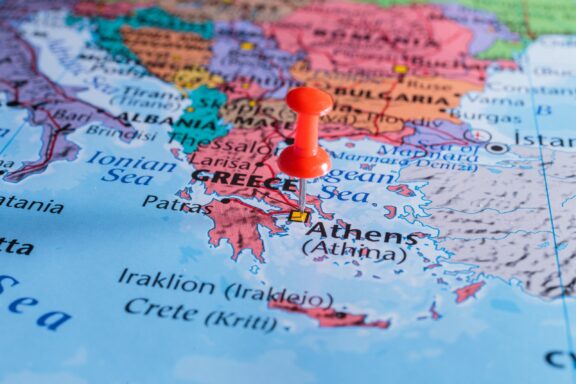
Athens is situated in the Attica region, surrounded by the Aegean Sea, making the city coastal. The Saronic Gulf lies to the southwest of Athens. The geographical coordinates of Athens are approximately 37.98 °N latitude and 23.72 °E longitude.
Athens is approximately halfway between Greece’s western and eastern coasts, with its center roughly 5 kilometers inland from the Saronic Gulf. The city is known for its hilly landscape, with the most prominent hill being the Acropolis, upon which many ancient structures like the Parthenon were built.
History of Athens
Athens has a history, with records dating back over 3,400 years. The city’s origins are often associated with the goddess of wisdom, Athena, to whom the city is dedicated.
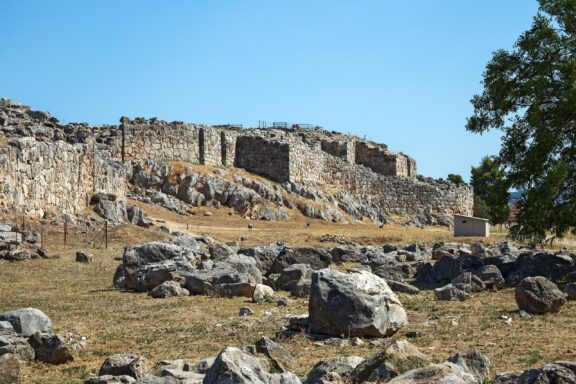
During the Mycenaean civilization around 1400-1200 BC, Athens was a powerful city, and the Acropolis, the hill in the center of the city, was its fortified stronghold. After the collapse of the Mycenaean civilization, the city went through a period known as the Dark Ages. Still, it began to recover around the 9th century BC, entering a period of growth and prosperity.
By the 5th century BC, during what is now known as the Classical period, Athens had become a center of art, learning, and philosophy. This period saw the city’s democracy flourish under leaders like Pericles.
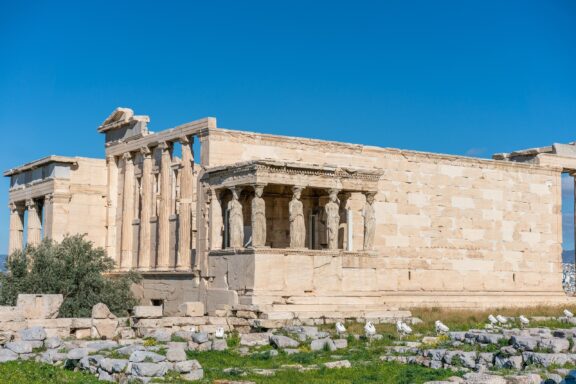
Athens became a cultural magnet, attracting philosophers such as Socrates, Plato, and Aristotle. Also, during this time, the construction of the Parthenon and other significant structures on the Acropolis took place.
However, this golden age was short-lived. The city was defeated by Sparta in the Peloponnesian War (431-404 BC), marking a decline in its political and military power, though it remained a center for philosophy and learning. Athens fell to the Macedonians, led by Philip II and later his son Alexander the Great.
The Romans conquered Athens in 146 BC, but the city retained its cultural prominence. The Roman period was marked by the construction of significant architectural projects, including the Library of Hadrian and the Roman Agora.
During the Byzantine period, Christianity became dominant, and many temples were converted into churches. In 1458, Athens fell under the control of the Ottoman Empire, leading to a period of decline and neglect.
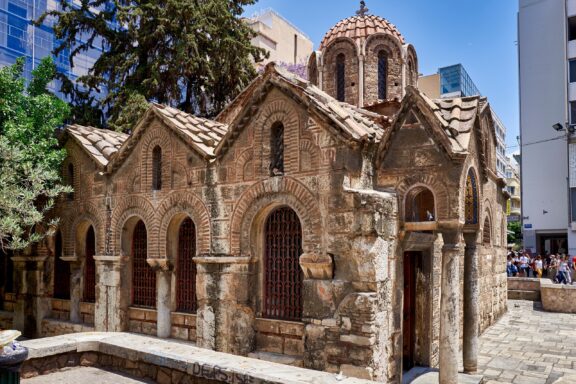
Greece won its independence in 1832 after the Greek War of Independence. Later in 1984, Athens was chosen as the capital because of its symbolic importance as the birthplace of democracy and its historical significance.
At this time, the city was a small town of about 7,000 people centered around the Acropolis. But the choice to make it the capital led to rapid growth and modernization in the late 19th and early 20th centuries, with the population reaching 1 million by the mid-20th century.
During World War II, Athens was occupied by Axis powers, leading to a severe famine. The city was liberated in 1944 but plunged into civil war almost immediately. Post-war recovery was slow, but Athens experienced significant growth and development in the second half of the 20th century. The city hosted the Olympic Games twice, in 1896 and again in 2004.
Features of Athens
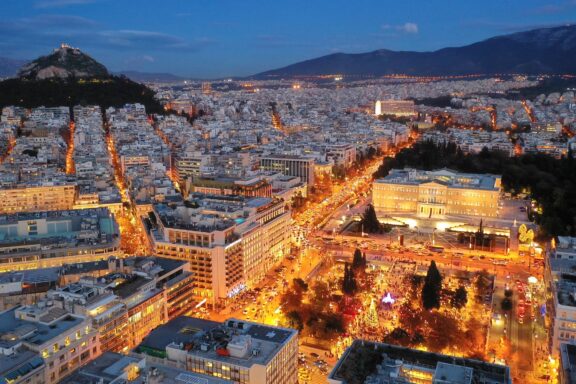
Athens is a city of contrasts, where ancient history and modern lifestyle coexist uniquely. Athens is world-renowned for its historical sites and boasts many museums.
Apart from its ancient history, Athens is known for its vibrant neighborhoods, labyrinthine streets, and neoclassical architecture. Greek cuisine, renowned for its healthy ingredients and flavorful dishes, is another highlight of Athens. Traditional tavernas and modern restaurants offer an array of dishes.
Geography and Climate
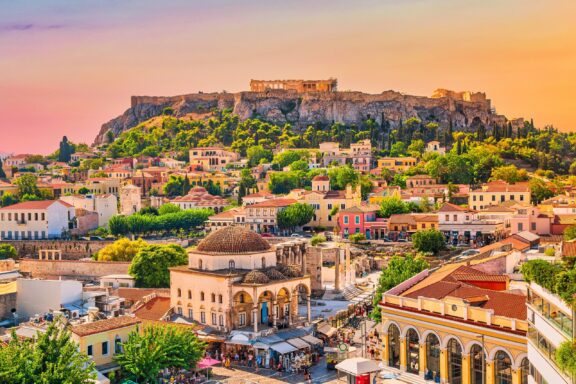
Athens experiences a Mediterranean climate characterized by hot, dry summers and mild, wet winters. In the summer, the temperatures range from 20 °C (68 °F) to 35 °C (95 °F) and can occasionally even surpass 40°C (104°F). Winters are mild, with temperatures usually between 5 °C (41 °F) to 15 °C (59 °F), and snow is rare but not unheard of. The city receives most of its rainfall in late autumn and winter.
Population
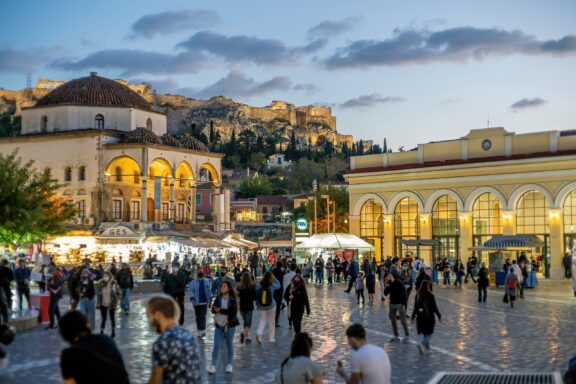
The city of Athens’s larger metropolitan area is home to over 3 million people. This makes it one of the most populous urban areas in Southeastern Europe.
Like the rest of Greece, the people of Athens are primarily of Greek ethnicity, with the Greek Orthodox Church being the predominant religion. The city is also home to immigrants from around the world, including countries in the Balkans, the Middle East, and Africa, adding to the city’s diversity. Athens is generally well-educated, with many inhabitants having university degrees.
Economy
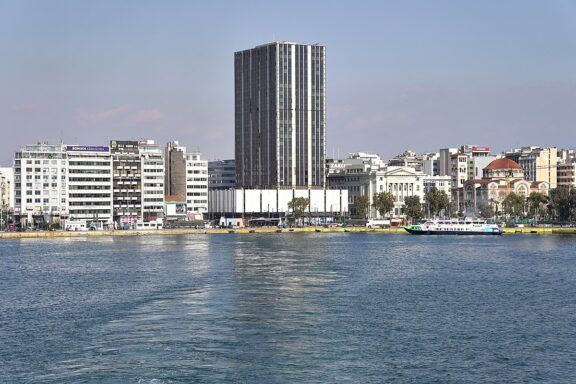
Athens is the economic hub of Greece and an important economic center in southeastern Europe. The city’s economy is dominated by the service sector, which includes tourism, retail, finance, and public administration. Tourism is essential due to the city’s rich history and cultural heritage, with millions of tourists visiting the city each year to explore its ancient sites.
The Port of Piraeus in Athens is the largest passenger port in Europe and the second-largest globally, making it a critical hub for trade and transportation. It also serves as the base for Greece’s substantial shipping industry, one of the largest in the world.
Despite the significant economic activities, Athens, like the rest of Greece, faced severe financial challenges due to the country’s debt crisis that started in 2009. The economy has been slowly recovering, with gradual employment and GDP growth improvements.
Things to Do and Places to See in Athens
Athens offers a plethora of activities and sights for exploration. Let’s delve into some of the city’s most frequented sites and attractions:
1. Visit the Acropolis
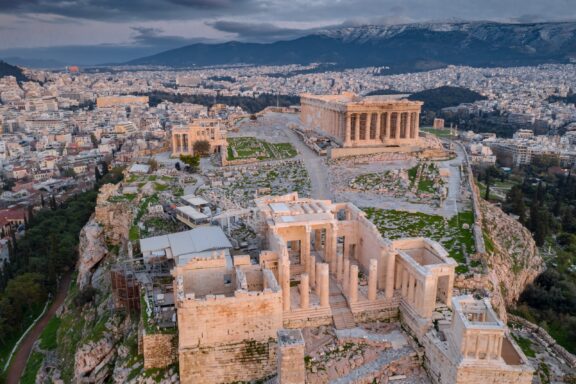
The Acropolis is a hill in the center of Athens, home to several ancient buildings of immense historical and architectural significance. The Acropolis, a UNESCO World Heritage Site, is a testimony to Ancient Greece’s grandeur, in which monuments and sanctuaries of white Pentelic marble gleaming in the Attic sky have been universal symbols of the classical spirit and civilization for over 2,000 years.
Visitors can walk through the Propylaea, the monumental gateway, to see iconic structures like the Parthenon, the Erechtheion, and the Temple of Athena Nike. Each building tells a story of gods, goddesses, and ancient rituals.
2. Explore the Acropolis Museum
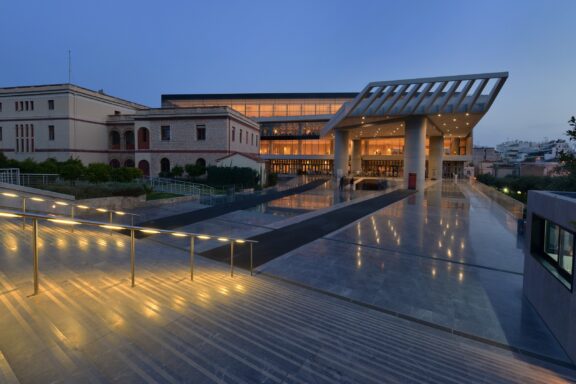
Located at the foot of the Acropolis Hill, this world-class museum is dedicated to the archaeological findings from the site. The exhibits cover a range of artifacts from the Bronze Age to Roman and Byzantine Greece. With its stunning collection, this museum has many fascinating facts attached to it.
The museum’s unique glass floor exposes archaeological excavations, while its glass walls offer a simultaneous view of the artifacts and the Acropolis. The museum opened to the public on June 20, 2009, after a lengthy planning and construction period. It quickly became a must-visit attraction in Athens.
The museum’s collection is spread over 14,000 square meters of exhibition space and includes over 4,000 artifacts found in and around the Acropolis. These range from items associated with everyday life in Athens to sculptures from the Parthenon.
3. Stroll through Plaka
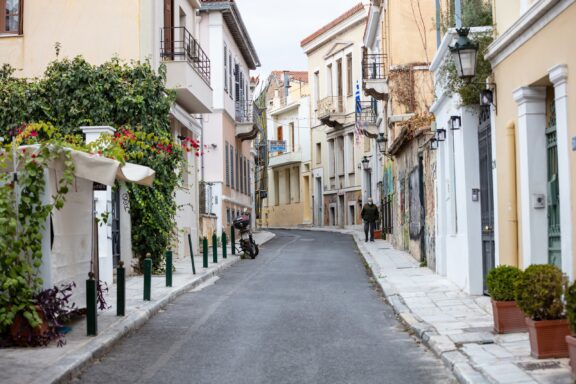
Plaka, nestled under the Acropolis, is Athens’s oldest continuously inhabited neighborhood. Known as the “Neighborhood of the Gods,” its labyrinthine streets, neoclassical architecture, colorful buildings, and blooming bougainvillea offer a nostalgic journey back in time. You can discover quaint boutiques, traditional tavernas, ancient sites, and local artisans.
Plaka has several historical monuments and sites, including the Roman Agora, the Tower of the Winds, the ruins of Hadrian’s Library, and the Greek Orthodox Church of St. Nicholas Rangavas, and is home to various museums such as the Museum of Greek Folk Art, the Jewish Museum of Greece, and the Frissiras Museum, which is dedicated to contemporary European painting.
4. Parthenon
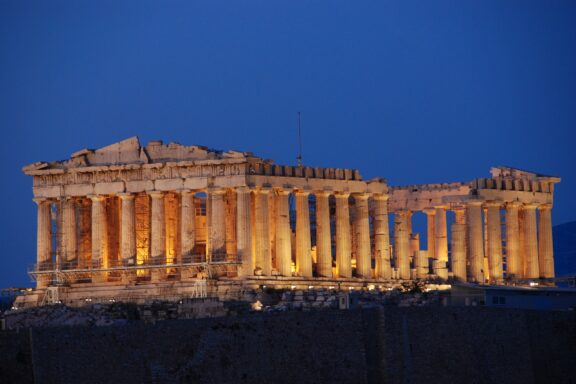
The Parthenon, an ancient temple on the Acropolis of Athens, Greece, is one of the world’s greatest cultural monuments and is a symbol of the golden age of Classical Greece.
This iconic former temple on the Athenian Acropolis was dedicated to the city’s patroness, Athena. Completed in 438 BC, the Parthenon is an enduring symbol of Ancient Greece and a testament to Athenian democracy. Its architectural features, such as the Doric columns and intricate friezes, make it a masterpiece of the Classical era.
5. Temple of Olympian Zeus
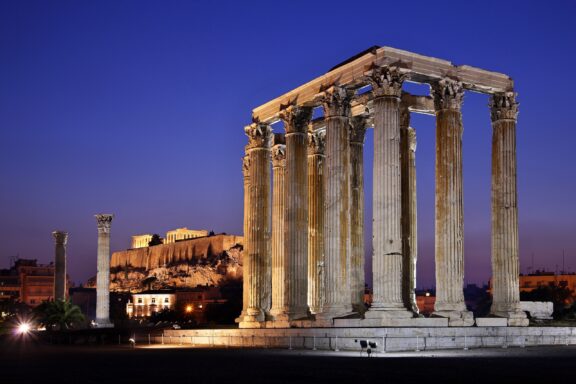
The Temple of Olympian Zeus’ construction started in the 6th century BC during the rule of the Athenian tyrants, who envisaged building the greatest temple in the ancient world. Still, it was not completed until the reign of the Roman Emperor Hadrian in the 2nd century AD, 638 years after the project had begun.
Originally the temple consisted of 104 Corinthian columns, each 17 meters (56 feet) high. Today only 15 of these columns remain standing, plus a 16th column was blown over by a storm in 1852 and still lies where it fell.
6. Temple of Hephaestus
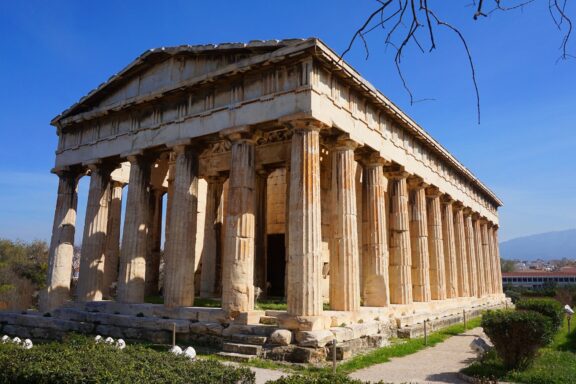
The Temple of Hephaestus, or Hephaisteion or Theseion, is one of the best-preserved ancient Greek temples. It is located on the northwest side of the Agora of Athens, on top of the Agoraios Kolonos hill. The temple was dedicated to Hephaestus, the ancient god of fire and metalworking.
The Temple of Hephaestus is a Doric peripteral temple surrounded by columns on all sides, with six columns on the short and thirteen on the long sides. It’s the most well-preserved ancient Greek temple, mainly due to its conversion into a Greek Orthodox church in the 7th century AD, which helped to protect it from destruction.
7. Shop at Monastiraki Flea Market
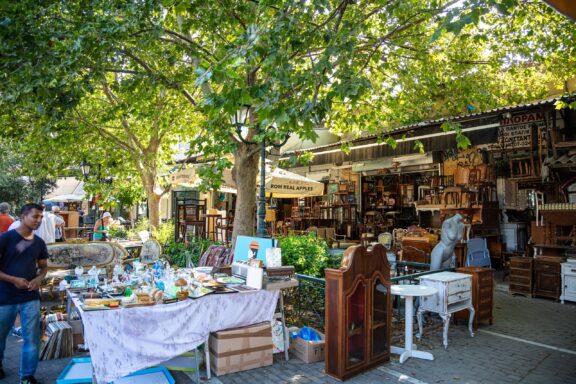
The Monastiraki Flea Market is a paradise for those interested in vintage and antique items. Many vendors sell various old items, from Byzantine icons to vintage cameras and vinyl records. The market is located near many significant archaeological sites, including the Ancient Agora, the Roman Agora, and the Acropolis. This makes it a perfect place to stop for shopping and dining after sightseeing.
The market is a favorite place for both locals and tourists. It offers a glimpse into Athenian life and is the perfect place to buy souvenirs. Apart from shopping, you can enjoy delicious Greek food from the various food stalls, street vendors, and tavernas in and around the market.
8. Climb Mount Lycabettus
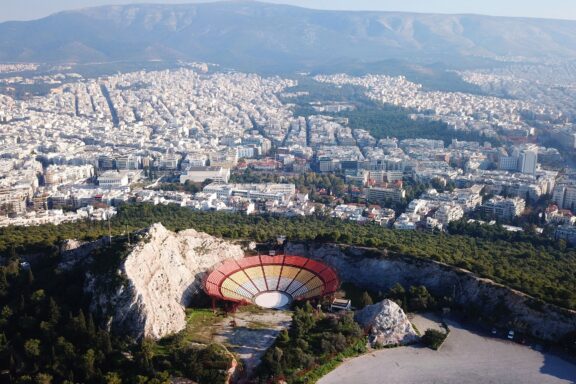
Mount Lycabettus, also known as Lycabettos, Lykabettos, or Lykavittos, is a prominent limestone hill in Athens, Greece. At 277 meters (908 feet) above sea level, Mount Lycabettus is the highest point in Athens, offering breathtaking views of the city and, on clear days, even the Aegean Sea.
At the top of the hill, you’ll find the whitewashed Chapel of Saint George. Constructed in the 19th century, it’s a popular spot for tourists and locals. An open-air amphitheater near the top hosts’ concerts and performances during the summer months. Artists worldwide have performed here, including Ray Charles, Bob Dylan, and James Brown.
9. Theatre of Dionysus
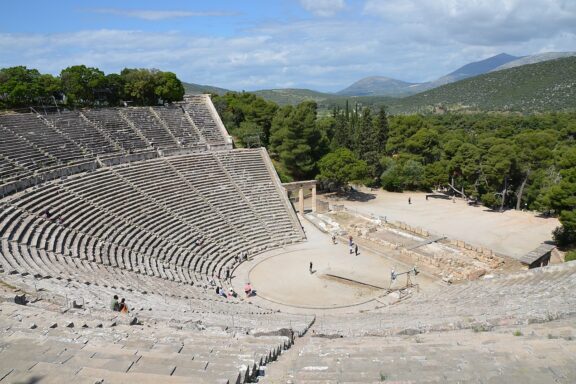
The Theatre of Dionysus is an ancient theatre in Athens, Greece, located on the southern slope of the Acropolis. It’s considered the birthplace of European theatre and is dedicated to Dionysus, the ancient Greek god of wine, pleasure, and festivity.
The theatre could hold approximately 17,000 spectators seated in a semi-circular arrangement. This design became the model for all subsequent theatres in Greece and, later, Rome. The Theatre of Dionysus was the main venue for the City Dionysia, a major festival in honor of the god Dionysus. This festival was Athens’s most important event, including processions, sacrifices, and dramatic competitions.
10. Visit the National Archaeological Museum
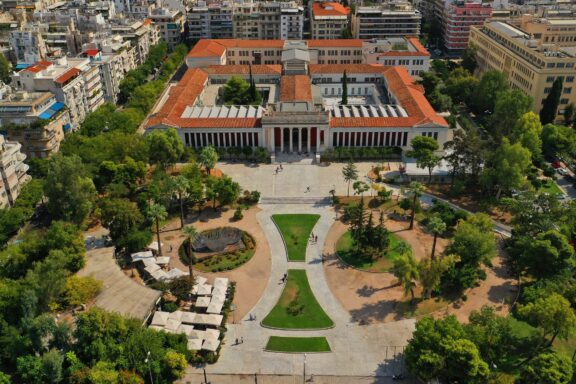
The National Archaeological Museum in Athens, Greece, is the largest archaeological museum in the country and one of the most important museums in the world devoted to ancient Greek art.
The National Archaeological Museum was founded at the beginning of the 19th century and was initially housed in a building on Aiolou Street. It moved to its current location, a grand neoclassical building, in 1889.
The museum’s collections include prehistoric items, sculptures, metalwork, pottery, and items from Egyptian and Near Eastern antiquities. The museum is also home to the famous bronze statue of Zeus or Poseidon, dating from the 5th century BC. The identity of the god depicted is unclear as it’s unknown whether the figure once held a thunderbolt (Zeus) or a trident (Poseidon).
11. Relax on nearby beaches
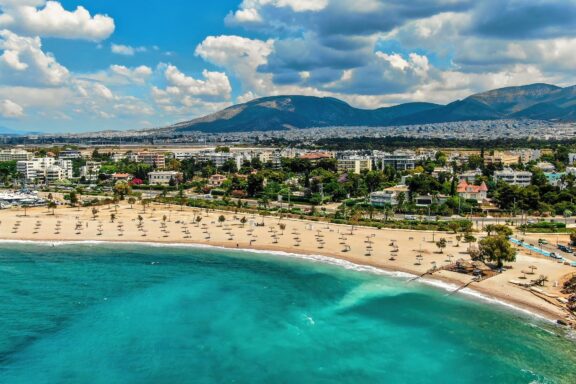
The Athens Riviera offers a stretch of idyllic beaches, just a short drive from the city center. There are various options here, from organized beaches with amenities to more secluded spots. Some of the most popular include Vouliagmeni Beach, Astir Beach, and Glyfada Beach. These beaches offer everything from water sports to beach bars and restaurants.
Stretching from the southern suburbs to the southernmost point of Attica, Cape Sounio, at the Athens Riviera, you can take a leisurely drive, enjoy a seaside meal, visit the Temple of Poseidon in Sounio, or take in the sunset. Athens Riviera is a great place to relax and enjoy the sophisticated side of Athens.
12. Watch a Performance at the Odeon of Herodes Atticus
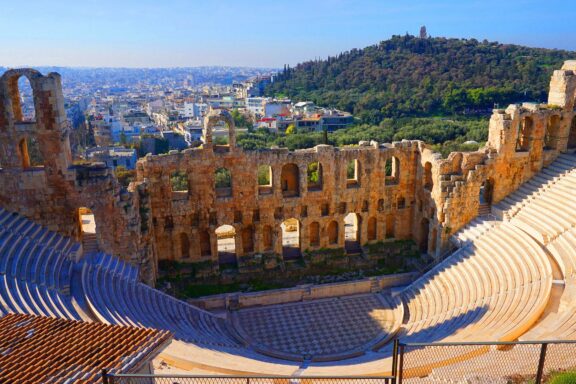
The Odeon of Herodes Atticus, also known as Herodeon, is a stone theatre structure on the southern slope of the Acropolis in Athens, Greece. It was built in 161 AD by the Athenian magnate Herodes Atticus in memory of his wife, Aspasia Annia Regilla.
The structure was made entirely of stone and is considered one of the most spectacular buildings of its time. It features a three-story stone front wall and a wooden roof made of expensive cedar of Lebanon timber and could seat around 5,000 people.
13. Explore the Ancient Agora
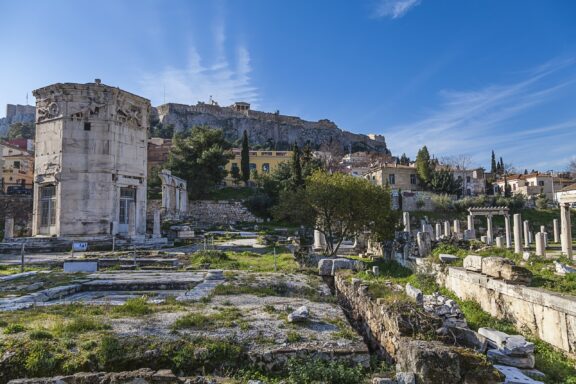
Once ancient Athens’s social, political, and commercial hub, the Agora is a must-visit. The Ancient Agora of Athens is an integral part of the city’s history, serving as the political, commercial, administrative, and social hub in ancient times.
The Agora was home to several significant buildings, including the Stoa of Zeus, which was a religious sanctuary; the Tholos, which served as the seat of the executive committee of the council; and the Temple of Hephaestus, which is one of the best-preserved ancient Greek temples.
One of the most notable buildings in the Agora is the Stoa of Attalos. The original was built around 150 BC, and a faithful reconstruction now stands in its place, housing the Museum of the Ancient Agora.
Frequently Asked Questions
Is Athens safe for tourists?
While Athens and Greece overall maintain a reputation for safety, there are certain neighborhoods in Athens – specifically Omonoia, Acharnes, Menidi, and Zefyri – where it’s advisable to refrain from solitary or nighttime strolls.
What is traditional food like in Athens?
Athens is known for its traditional Greek cuisine. This includes dishes such as:
• Moussaka (a layered eggplant and meat dish)
• Souvlaki (grilled meat skewers)
• Tzatziki (yogurt, cucumber, and garlic dip)
• Dolmades (stuffed grape leaves)g, shopping, and sightseeing choices.
What’s the best time to visit Athens?
The best time to visit Athens is spring (April to June) and autumn (September to November) when the weather is milder. Summer can be very hot, especially for sightseeing.
Do people in Athens speak English?
Yes, English is widely spoken in Athens, especially in tourist areas. Most signs and menus are also translated into English.
Can you drink tap water in Athens?
Yes, the tap water in Athens is safe to drink. However, some people prefer the taste of bottled water.
How to get around in Athens?
Athens has an efficient public transportation system that includes buses, metro, tram, and taxis. Many of the major historical sites are also within walking distance of each other.
What should I wear in Athens?
Dress in Athens is generally casual. Comfortable shoes are recommended as there’s a lot of walking, often on uneven surfaces at archaeological sites. In summer, lightweight clothing is advisable, while winter can be cooler with rain, so pack accordingly.
Is Athens expensive to visit?
Compared to other European capitals, Athens is relatively affordable. The cost will depend on your accommodation, dining, shopping, and sightseeing choices.
Final Thoughts
Athens is a fantastic city that effortlessly marries the ancient with the modern. Its rich historical legacy, vibrant culture, and tantalizing cuisine make it an enchanting destination for any traveler. The stunning archaeological sites, the charming neighborhoods, the stunning beaches, and the warm, friendly locals offer a truly unique experience.
Despite a few areas requiring precaution, it is generally safe and welcoming. The city is not just a gateway to the idyllic Greek islands but a worthwhile destination in its own right. Whether you are a history buff, a food enthusiast, or looking for a laid-back yet culturally rich experience, Athens is undeniably worth visiting. The memories you create here will stay with you long after you’ve left its golden shores.
Image Sources and Copyright Information
- image-43: © Mappr
- Location Pin on Athens Map: © Alexander LukatskiyShutterstock
- Ancient Ruins of Tiryns: © Pavel Kirichenko/Shutterstock
- Ancient Erechtheion Temple on the Acropolis of Athens: © Lambros Kazan/Shutterstock
- Byzantine Church in Urban Setting: © marcobrivio.photography/Shutterstock
- Athens Cityscape at Dusk: © Aerial-motion/Shutterstock
- Athens at Sunset: © Nick N A/Shutterstock
- Evening at Monastiraki Square with Acropolis View, Athens: © isidoros andronos/Shutterstock
- Piraeus Tower by the Sea in Athens: © George E. Koronaios/Wikimedia | CC BY-SA 4.0 International
- Aerial View of the Acropolis in Athens: © Drozdin Vladimir/Shutterstock
- Evening View of the Acropolis Museum: © Paul Shark/Shutterstock
- Quaint Street in Plaka Neighborhood, Athens: © rawf8/Shutterstock
- Parthenon at Dusk: © Paul Shark/Shutterstock
- Temple of Olympian Zeus at Twilight: © Heracles Kritikos/Shutterstock
- Ancient Greek Temple Structure Under Clear Sky: © Aerial-motion/Shutterstock
- Flea Market Stalls Under Trees: © rawf8/Shutterstock
- Aerial View of Open-Air Theater on Lycabettus Hill with Cityscape Background: © Aerial-motion/Shutterstock
- Theatre of Dionysus in Athens, Greece: © Carole Raddato/Wikimedia | CC BY-SA 2.0 Generic
- Aerial View of National Archaeological Museum and Surrounding Gardens: © Aerial-motion/Shutterstock
- Aerial View of Glyfada Beach in Athens Riviera: © Zisimos Zizos/Shutterstock
- Ancient Amphitheater Overlooking City: © Aerial-motion/Shutterstock
- Ancient Roman Agora Ruins with Acropolis in the Background: © Anastasios71/Shutterstock